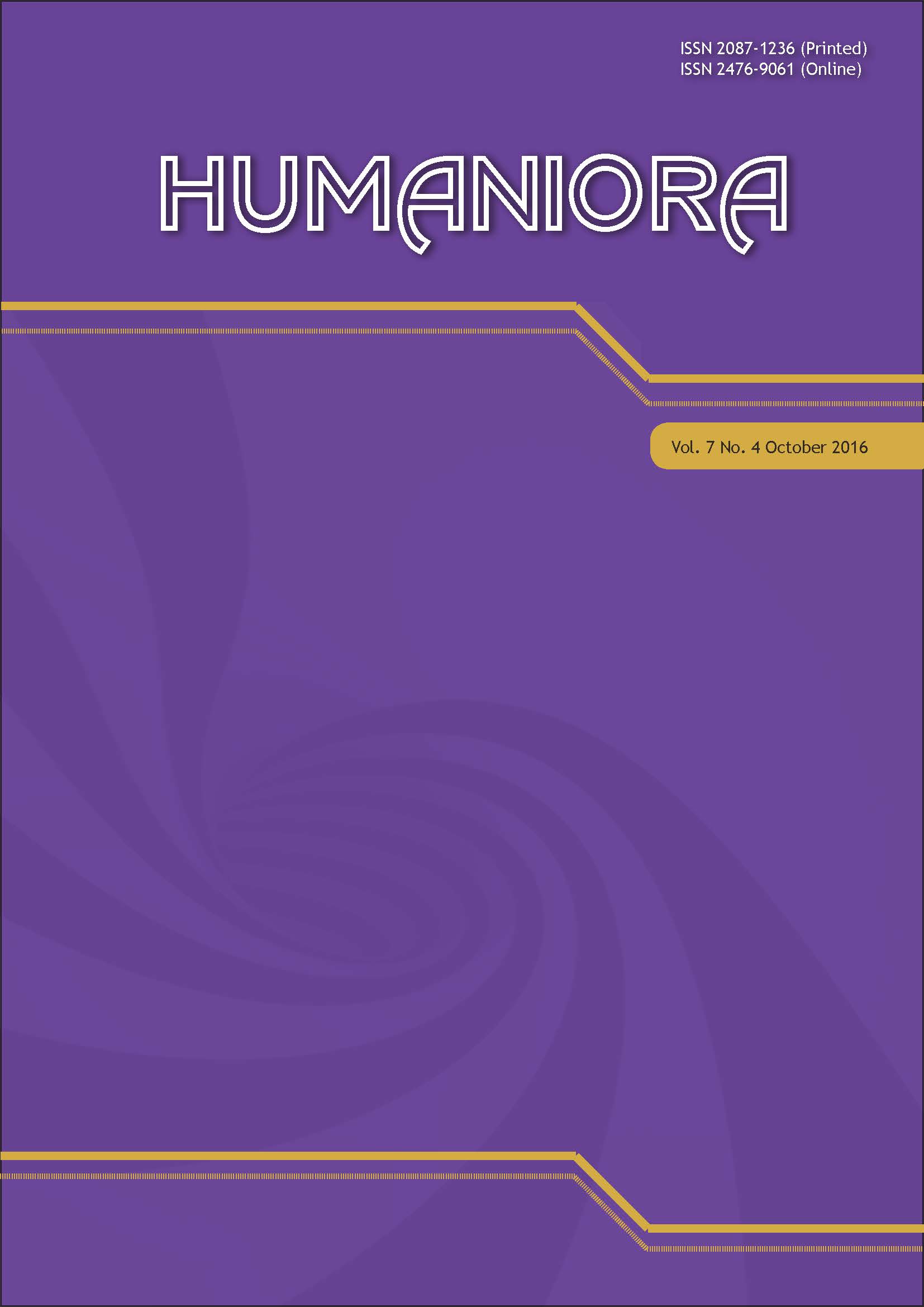Identification of Spacial Pattern in Productive House of Pottery Craftsmen
DOI:
https://doi.org/10.21512/humaniora.v7i4.3608Keywords:
spacial pattern, productive house, pottery craftsmen, settlementAbstract
The research goals were to identify a spacial pattern in craftsmen house and to see its relevance to the social-cultural life of the craftsmen. The existence of domestic and economic activity in craftsmen house creates a spacial pattern with particular characteristics. Data were collected through direct observation, interviews, and visual documentation to record productive house, settlement condition, and sequences of pottery production. The in-depth interview focused on the use of time, space, and house modification in craftsmen house. House in the craftsmen settlement was growing gradually by adjusting to the inhabitant's needs. This research was included in qualitative research that described observation results and then analyzed spacial pattern formed in craftsmen house. Research results show that in this settlement beside the mixed, balanced, and separated type of productive house, there is also pottery collectors house type. The changes in the productive house are related to housing adaptation or house adjustment to accommodate production process. The settlement orientation is along the streets, but the existence of open space in the form of pottery kiln and hay storage become the main orientation for productive spaces inside the craftsmen house. Pottery kiln and hay storage have become open cultural space that characterizes the pottery craftsmen settlement.
Â
References
Funo, S., Yamamoto, N., & Silas, J. (2002). Typology of Kampung Houses and Their Transformation Process. Journal of Asian Architecture and Building Engineering, 1(2), 193–200. https://doi.org/10.3130/jaabe.1.2_193
Kridarso, E. R., Tobing, R. R., & Siahaan, U. (2015). Comparison between Traditional Javanese Room Arrangement and Productive Houses Room Arrangements in Kauman, Pekalongan – Central Java Universitas Kristen Indonesia - Jakarta. IJRET: International Journal of Research in Engineering and Technology, 4(10), 443–447.
Samarasinghe, V. (1997). Counting women’s work: The intersection of time and space. In J. P. Jones, H. J. Nast, & S. M. Roberts (Eds.), Thresholds in Feminist Geography: Difference, Methodology, and Representation. CHAP, Rowman & Littlefield Publishers.
Silas, J. (2000). Rumah Produktif Pendekatan Tradisi dan Masyarakat. In Silas, J., Wibowo, A. S., Setiawan, W., Rumah Produktif, Laboratorium Perumahan dan Permukiman, Surabaya.
Spradley, J. P. (2007). Metode Etnografi (2nd Ed.). Yogyakarta: Tiara Wacana.
Turner, J. F. C., & Fichter, R. (1972). Freedom to Build: Dweller Control of the Housing Process. BOOK, New York: Macmillan.
Widayati, N. (2002). Permukiman Pengusaha Batik di Laweyan Surakarta. (Unpublished disertation). Depok: Program Pascasarjana Fakultas Sastra Universitas Indonesia.
Downloads
Published
How to Cite
Issue
Section
License
Authors who publish with this journal agree to the following terms:
a. Authors retain copyright and grant the journal right of first publication with the work simultaneously licensed under a Creative Commons Attribution License - Share Alike that allows others to share the work with an acknowledgment of the work's authorship and initial publication in this journal.
b. Authors are able to enter into separate, additional contractual arrangements for the non-exclusive distribution of the journal's published version of the work (e.g., post it to an institutional repository or publish it in a book), with an acknowledgment of its initial publication in this journal.
c. Authors are permitted and encouraged to post their work online (e.g., in institutional repositories or on their website) prior to and during the submission process, as it can lead to productive exchanges, as well as earlier and greater citation of published work.
USER RIGHTS
All articles published Open Access will be immediately and permanently free for everyone to read and download. We are continuously working with our author communities to select the best choice of license options, currently being defined for this journal as follows: Creative Commons Attribution-Share Alike (CC BY-SA)




















